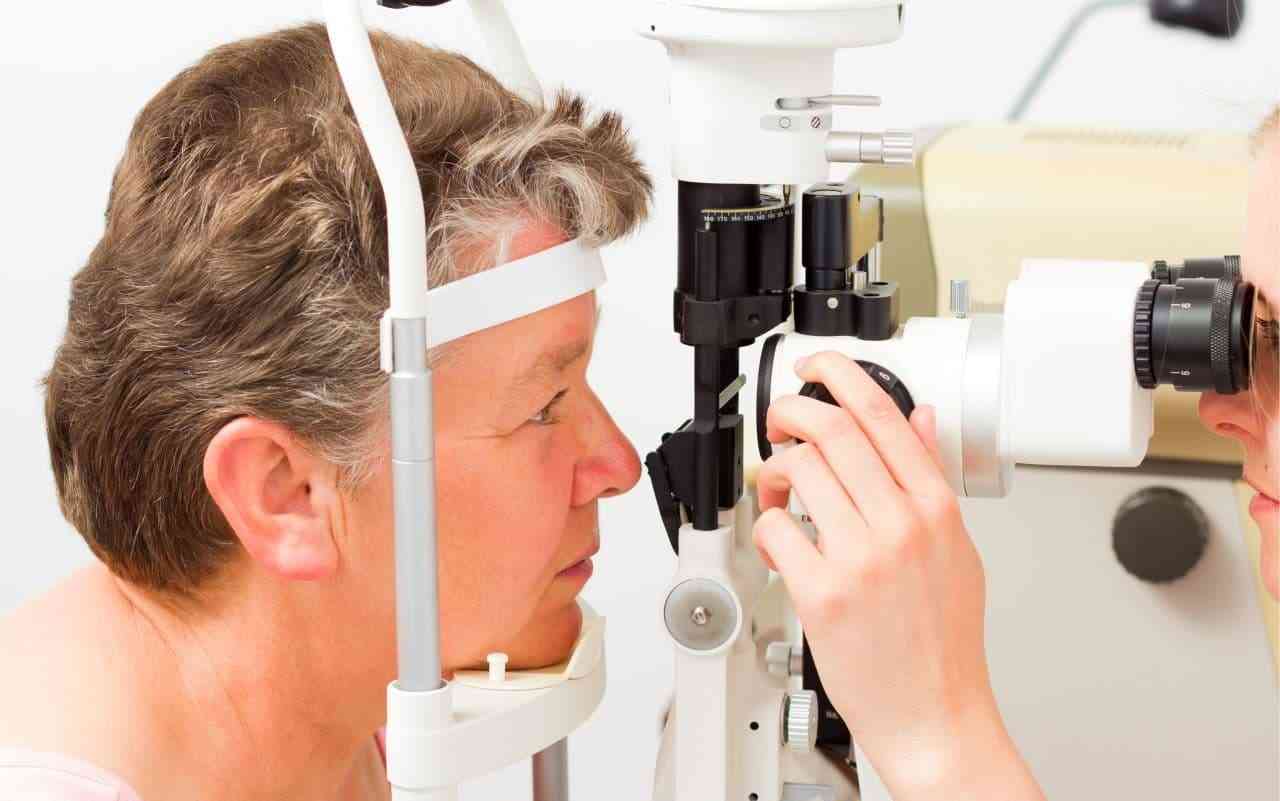Detecting cataracts early is crucial for timely intervention and effective management. In this article, we will delve into the topic of cataracts, exploring the first signs that may indicate their presence.
By understanding these signs, you can take proactive measures and seek appropriate medical attention to address cataracts in their early stages.
What Are Cataracts?
Before we delve into the signs and symptoms, let's start with a clear understanding of cataracts. Cataracts refer to the clouding of the lens in the eye, leading to blurry vision and reduced visual clarity. They commonly develop with age but can also occur due to other factors such as genetics, trauma, or medical conditions like diabetes.
Importance of Early Detection
A cataract develops when proteins in the lens of the eye gather together, blocking light from coming into the eye. Cataracts often develop slowly, and they can affect one or both eyes. Although cataracts can happen at any age, they typically happen in later years.
The earlier your eye doctor notice and treats your cataract, the quicker you can get back to leaving a full and productive life. If your cataract progresses, you may find it difficult to drive at night due to excessive glare or from seeing halos around headlights and bright lights.
Risk Factors for Cataracts
Certain factors increase the likelihood of developing cataracts. Understanding these risk factors can help you assess your own risk and take necessary precautions. We will discuss age, family history, diabetes, smoking and alcohol consumption, prolonged sun exposure, and certain medications that can contribute to cataract formation.
Common Symptoms of Cataracts
Recognizing the early symptoms of cataracts is crucial for seeking timely medical intervention and ensuring the best possible outcomes for your eye health. In this guide, we will delve into the common symptoms associated with cataracts, providing you with valuable knowledge to identify potential signs and take appropriate action.
Blurred Vision
One of the most common symptoms of cataracts is blurred vision. Individuals with cataracts often experience a gradual decline in the clarity of their vision. Objects may appear hazy, fuzzy, or out of focus, even with the use of prescription glasses or contact lenses. This blurring effect can make it challenging to read, drive, or perform daily activities that require clear vision.
Cloudy or Dim Vision
Cataracts can cause a clouding or dimming effect on your vision. You may notice that your vision becomes cloudy, as if you are looking through a foggy or frosted window. Colors may appear less vibrant, and your visual perception may seem muted. This cloudiness can progressively worsen over time, affecting your ability to see details and distinguish between objects.
Sensitivity to Light
If you find yourself becoming increasingly sensitive to light, it could be a potential symptom of cataracts. Bright lights, such as sunlight or indoor lighting, may cause discomfort or glare. You might experience difficulty adjusting to changes in lighting conditions, such as when entering a well-lit room from a darker environment. This sensitivity can lead to squinting or a desire to shield your eyes from bright lights.
Difficulty Seeing at Night
Cataracts can have a significant impact on your ability to see clearly in low-light conditions, such as during nighttime or in dimly lit environments. You may experience decreased night vision, making it challenging to navigate and discern objects or people in the dark. The reduced contrast sensitivity can cause difficulties with depth perception and make it more hazardous to drive or move around in poorly lit areas.
Double Vision
Double vision, medically known as diplopia, is another potential symptom of cataracts. You may perceive a single object as a double image, either horizontally or vertically. This occurs because the cataract affects the way light enters your eye, causing it to scatter or refract improperly. Double vision can be disorienting and interfere with tasks that require visual concentration, such as reading or driving.
Changes in Color Vision
Cataracts can also impact your ability to perceive colors accurately. You may notice a yellowing or browning of your vision, causing colors to appear faded or washed out. Colors that were once vibrant may lose their intensity or clarity. This can affect your overall visual experience, making it harder to appreciate the richness and nuances of the world around you.
Frequent Prescription Changes
If you find yourself needing frequent changes in your eyeglass or contact lens prescriptions, it may be an indication of cataracts. As the cataract progresses, it can cause fluctuations in your vision, requiring adjustments to your corrective lenses. If you notice that your prescription is no longer providing optimal vision or that your visual acuity varies frequently, it's essential to consult with an eye care professional.
Halos Around Lights
You may observe circles or rings of light around light bulbs or headlights, making them appear larger and more diffused. These halos can be distracting and potentially affect your ability to drive safely, especially during nighttime.
Poor Depth Perception
Diminished depth perception is a symptom commonly associated with cataracts. It can make it challenging to accurately judge distances between objects. Tasks that require depth perception, such as climbing stairs or reaching for objects, may become more difficult and pose a potential safety risk. You may find yourself misjudging steps or struggling with coordination in activities that require precise spatial awareness.
Eye Strain or Fatigue
Cataracts can cause increased eye strain and fatigue. You may notice that your eyes feel tired or achy, especially after extended periods of reading or focusing on close-up tasks. The effort required to compensate for blurred or cloudy vision can lead to eye discomfort, headaches, and a feeling of overall eye fatigue.
Different Types of Cataracts
Cataracts can manifest in different forms, and understanding these variations can provide valuable insight into their development and progression. We will discuss age-related cataracts, congenital cataracts present at birth, secondary cataracts caused by other eye conditions or health issues, traumatic cataracts resulting from eye injuries, and radiation cataracts associated with exposure to radiation.
Age-Related Cataracts
As the name suggests, age-related cataracts are the most common type of cataract and occur due to aging. With age, the proteins in the eye's natural lens start to break down, leading to cloudiness and vision impairment. Age-related cataracts usually develop gradually, and symptoms may not be noticeable until the cataract is well established.
Congenital Cataracts
Congenital cataracts are present at birth or develop shortly after birth. These cataracts can be caused by genetic factors, infections, or injuries during pregnancy. Congenital cataracts can affect one or both eyes and can lead to vision problems, including amblyopia or strabismus.
Secondary Cataracts
Secondary cataracts can develop after surgery to treat other eye conditions such as glaucoma or retinal detachment. The condition occurs when the membrane that supports the artificial lens implant becomes cloudy, leading to vision loss. This type of cataract can develop months or years after surgery and can be treated with a simple laser procedure.
Traumatic Cataracts
Traumatic cataracts occur as a result of physical injury or trauma to the eye. Blunt force trauma, such as a car accident or a blow to the eye, can cause damage to the lens, leading to cloudiness and vision loss. Traumatic cataracts can develop immediately after the injury or may take years to develop.
Radiation Cataracts
Radiation cataracts occur as a result of exposure to high levels of ionizing radiation, such as those used in cancer treatment. The radiation damages the natural lens, leading to cloudiness and vision loss. The onset of radiation cataracts can take several years, and symptoms may not appear until several years after exposure.
When to Seek Medical Attention
Knowing when to consult an eye care professional is crucial for timely diagnosis and appropriate treatment. We will outline the importance of seeking medical attention if you notice any of the aforementioned symptoms or experience changes in your vision.
A comprehensive eye examination is essential for accurate diagnosis and to explore the available treatment options.
Prevention and Management
While cataracts are often associated with age and other factors beyond our control, there are preventive measures we can take to reduce the risk and manage their progression. Strategies such as protecting your eyes from UV radiation, quitting smoking and reducing alcohol intake, managing diabetes effectively, scheduling regular eye examinations, maintaining a healthy diet, monitoring medications that may contribute to cataract formation, and the potential for surgical intervention.
Conclusion
Understanding the different types of cataracts is essential for early detection and appropriate treatment. If you experience any symptoms of cataracts, such as blurry vision or difficulty seeing in bright light, consult with an eye care professional for a comprehensive examination and accurate diagnosis. Remember, regular eye examinations are essential, especially as you age, to monitor your eye health and address any concerns promptly.
Image by Barabasa via Deposit Photos
An optometrist with a passion for eye care education.








